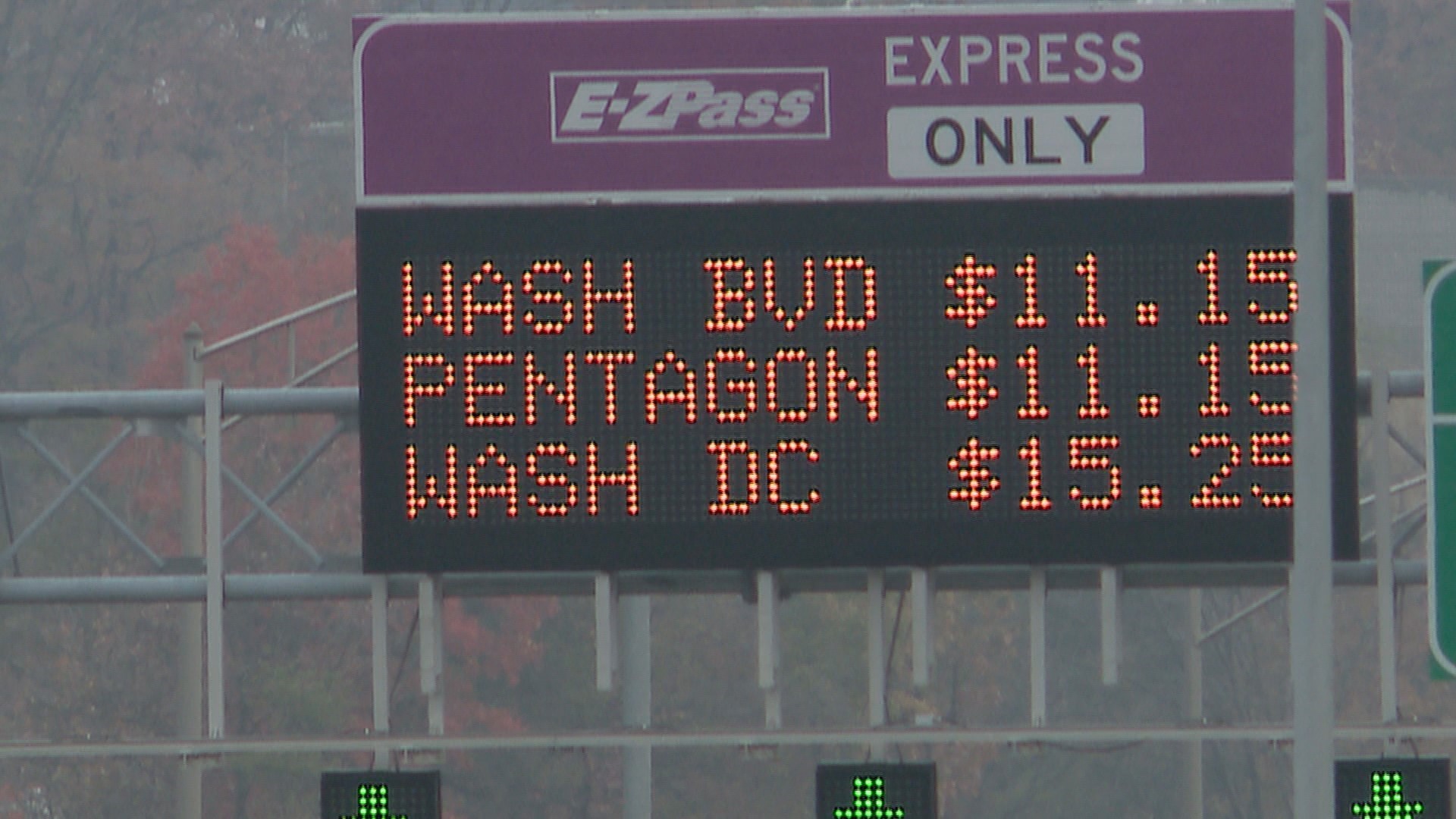WASHINGTON — As snow totals increased around the DMV following the first snowfall of the new year, so have toll fares. Riders in and out of the District saw hikes in fare pricing on Tuesday, with some tolls up to $62 on Express lanes like the 395/95.
At 3:45 p.m., the cost of going end to end on the 395/95 Express Lanes from D.C. to Stafford was at $53.70, still a pricy amount for those trying to make the commute back to home.
On snow days like Tuesday, workers may also have adjusted schedules and early releases, making roadways even more congested. Federal employees were let out at 1 p.m., causing increased traffic well before the usual rush hour times.
So why do toll prices go up, and how can you prepare ahead of time?
Riders who want to estimate prices can enter in their entrance and exit points on Transurban's Express Lane website to get a rough estimate of what to expect on their commutes. The estimator works for both Southbound and Eastbound routes and includes a breakdown of prices based on the current supply and demand of the roads, which is how Express Lanes formulate their prices.
WATCH: Our Verify team finds out if you can get a speeding ticket from E-ZPass cameras
According to Transurban, drivers are able to use Express lanes to circumvent other beltway traffic with what's called dynamic pricing. The more cars on the road, the more pricing goes up, with higher-priced tolls are incentive for drivers to find alternative routes back. Sensors are placed alongside the roads to monitor traffic and speed, which is why prices can change quickly.
Those driving on and around the beltway during Tuesday's snowfall weren't the only ones who felt the sting of increased commuters. Amtrak and Marc train riders also saw delayed services and cancelations on Tuesday because of overcrowding. Riders are encouraged to take the Metro back, which didn't see as many delays.
RELATED: Timeline: Snow Coming to an End


